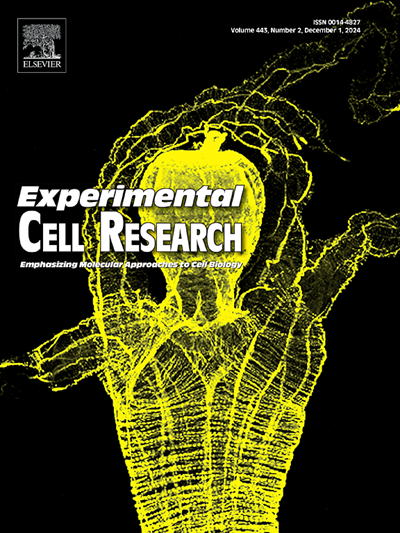In vitro dynamics of oyster hemocytes in plasma-based primary cultures
IF 3.5
3区 生物学
Q3 CELL BIOLOGY
引用次数: 0
Abstract
Hemocytes are specialized cells found in the circulatory system of invertebrates, such as marine bivalves, and play crucial roles in physiology and health. However, in bivalves, in-depth studies on their in vitro biology beyond one or two days remain scarce, particularly in Crassostrea (Magallana) gigas. In this study, we characterized the hemocytes isolated from triploid C. gigas oysters, maintained in vitro in their natural medium, hemolymph plasma, to assess their morphological, behavioral, and metabolic status over 21 days. A diverse population of hemocyte morphotypes, including granulocytes, hyalinocytes, and blast-like cells, was preserved for up to seven days, displaying various shapes and spreading patterns. By days 14 and 21, blast-like cells and hyalinocytes were less represented, showcasing granulocytes as the most resilient subpopulation in vitro. Despite this decline in subpopulation diversity, we confirmed through cell viability and metabolic assays, combined with live-cell imaging, that the remaining cells remained alive and active throughout the culture period. Notably, key indicators of cellular homeostasis such as membrane integrity, ATP levels, mitochondrial content, and mitochondrial reactive oxygen species (ROS) remained stable in these surviving cells. Phagocytic activity persisted over the full 21 days, with a marked increase after two weeks in culture. Certain time-dependent changes were observed, including a decrease in total basal ROS production from day 7 and a significant increase in neutral lipid storage by day 21. Live-cell imaging revealed two modes of cell motility: pseudopod-dependent and lamellipodium-dependent membrane extensions. Fibroblast-like hyalinocytes remained non-motile. Interestingly, not all motile granulocytes display phagocytic behavior and non-motile fibroblast-like hyalinocytes lack phagocytic activity entirely, highlighting the functional diversity within the different morphotypes identified in our cultures. By presenting an innovative method for sustaining primary marine invertebrate cell cultures using hemolymph plasma and leveraging different cell-based assays and live-cell imaging, this study provides a platform for investigating morphology, behavior, metabolism, and immune function of these cells under controlled in vitro conditions. Additionally, by highlighting the selective decline of certain hemocyte subpopulations, this study offers an in vitro model well-suited for future research into hemocyte lifespan and cell death mechanisms. Importantly, our framework not only advances research on bivalve hemocyte biology but also contributes to the broader field of experimental and comparative cell biology, with potential with applications in immunology, ecotoxicology, ecophysiology, molecular screening, and health innovation.

血浆原代培养牡蛎血细胞的体外动力学。
血细胞是在海洋双壳类等无脊椎动物的循环系统中发现的特化细胞,在生理和健康中起着至关重要的作用。然而,在双壳类中,对其1或2天以上的体外生物学深入研究仍然很少,特别是在长牡蛎(Magallana)中。在这项研究中,我们对从三倍体牡蛎中分离出来的血细胞进行了表征,并将其保存在体外的自然培养基——血淋巴浆中,以评估其形态、行为和代谢状态21天。不同类型的血细胞,包括粒细胞、透明细胞和胚样细胞,保存长达7天,显示出不同的形状和扩散模式。到第14天和第21天,胚样细胞和透明细胞较少,表明粒细胞是体外最具弹性的亚群。尽管亚群多样性下降,但我们通过细胞活力和代谢测定,结合活细胞成像证实,剩余的细胞在整个培养期间保持活力和活性。值得注意的是,细胞稳态的关键指标,如膜完整性、ATP水平、线粒体含量和线粒体活性氧(ROS)在这些存活细胞中保持稳定。吞噬活性持续了整整21天,在培养两周后明显增加。观察到一定的时间依赖性变化,包括从第7天开始总基础ROS生成减少,到第21天中性脂质储存显著增加。活细胞成像显示了两种细胞运动模式:假足依赖和板足依赖的膜延伸。成纤维细胞样透明细胞保持静止。有趣的是,并非所有运动的粒细胞都表现出吞噬行为,非运动的成纤维细胞样透明细胞完全缺乏吞噬活性,这突出了我们在培养中发现的不同形态的功能多样性。通过提出一种创新的方法,利用血淋巴血浆维持原代海洋无脊椎动物细胞培养,并利用不同的细胞检测和活细胞成像,本研究为在体外受控条件下研究这些细胞的形态、行为、代谢和免疫功能提供了一个平台。此外,通过强调某些血细胞亚群的选择性下降,本研究提供了一个体外模型,非常适合于未来血细胞寿命和细胞死亡机制的研究。重要的是,我们的框架不仅推动了双壳类血细胞生物学的研究,而且有助于更广泛的实验和比较细胞生物学领域,在免疫学、生态毒理学、生态生理学、分子筛选和健康创新方面具有应用潜力。
本文章由计算机程序翻译,如有差异,请以英文原文为准。
求助全文
约1分钟内获得全文
求助全文
来源期刊

Experimental cell research
医学-细胞生物学
CiteScore
7.20
自引率
0.00%
发文量
295
审稿时长
30 days
期刊介绍:
Our scope includes but is not limited to areas such as: Chromosome biology; Chromatin and epigenetics; DNA repair; Gene regulation; Nuclear import-export; RNA processing; Non-coding RNAs; Organelle biology; The cytoskeleton; Intracellular trafficking; Cell-cell and cell-matrix interactions; Cell motility and migration; Cell proliferation; Cellular differentiation; Signal transduction; Programmed cell death.
 求助内容:
求助内容: 应助结果提醒方式:
应助结果提醒方式:


